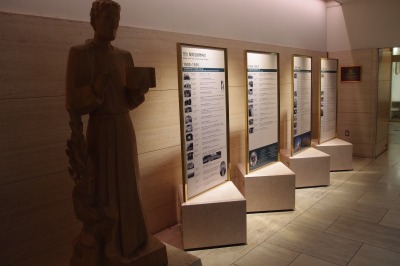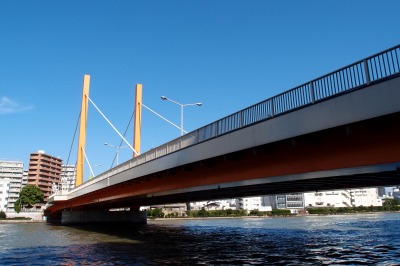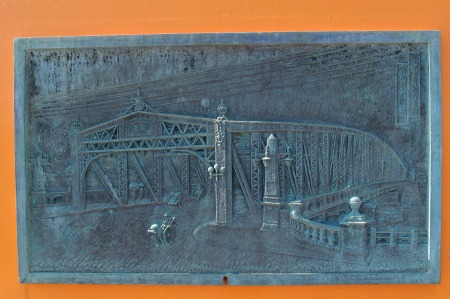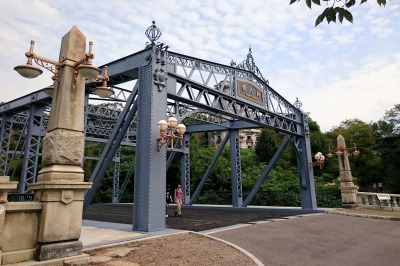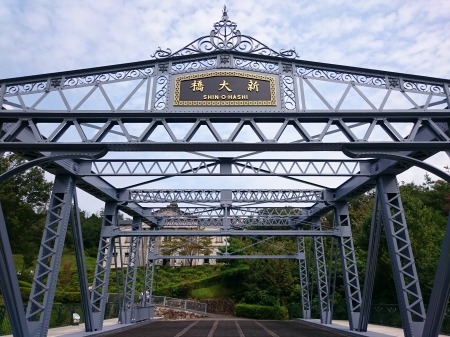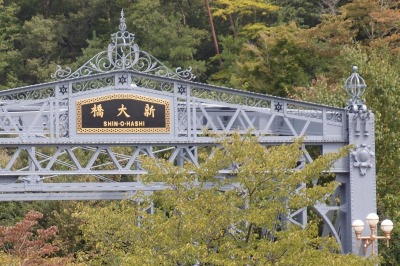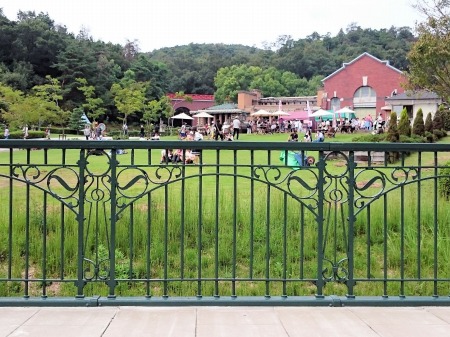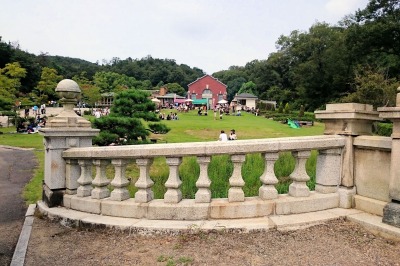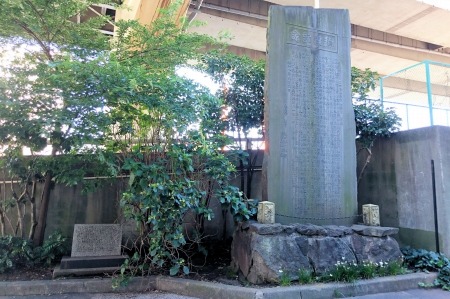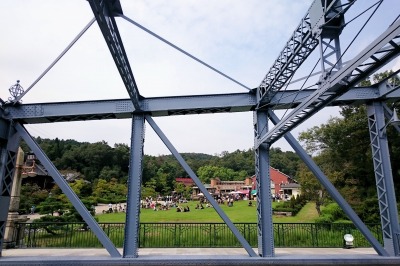The other day, I stopped by the Kachidoki Bridge Museum next to Kachidokibashi for the first time in a long time.
This museum was created by renovating the substations used to open Kachidokibashi, but it seems that this year marks its 10th anniversary.
On the way back, I received a limited postcard commemorating the 10th anniversary from my uncle at the museum, but I was glad that I was a good opportunity and asked my uncle about the questions I always thought when walking on the Sumida River Terrace .
What I asked about was "Kiyosu Bridge".
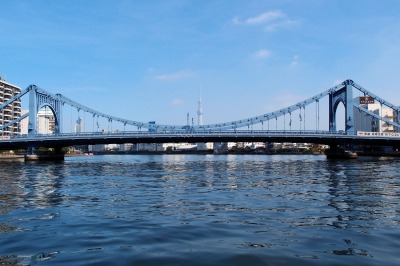 It is a suspension bridge built by a reconstruction project after the Great Kanto Earthquake and has become an important cultural property of the country.
It is a suspension bridge built by a reconstruction project after the Great Kanto Earthquake and has become an important cultural property of the country.
While the "Eitai Bridge" built in the same reconstruction project is said to be masculine, this "Kiyosu Bridge" is said to be "female" because of its form, and is very popular and loved among the Sumida River bridges. I am.
It is this part that my eyes always come up when I walk on the Sumida River terrace.
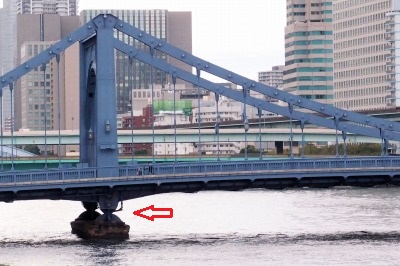
Looking from a distance, the lower part of the suspension bridge is constricted, and it seems to break somehow with a delicate feeling. The pillars of the suspension bridge had the image of being thick and pierced to the ground, so I asked a super amateur question, "Why is it okay?"
I was taught gently, but it was a little difficult because I didn't have any prerequisite knowledge or talked about mechanics. I regretted that I should have studied a little more and asked, but I remembered the following and returned home.
・This part is a kanji called "Kutsu", which combines "water" and "day", and is read as "shu".
・Depending on the shoe, the direction of force due to the weight of the bridge is transmitted directly below the pier.
・The image of a bridge riding a shoe.
A few days later, when I looked up at libraries, etc., this part was called "Shisho", and in English it was the word "Shoo" and Shoo of shoes. Since "Kutsu" is read as "Kutsu", it seems that he reads "shu" in the architectural industry term with the kanji "Kutsu".
Although it is a member that conveys the weight of the bridge to the bottom, the bridge extends and shrinks due to temperature changes, so it seems that this bearing plays the role of "play" and adjusts well.
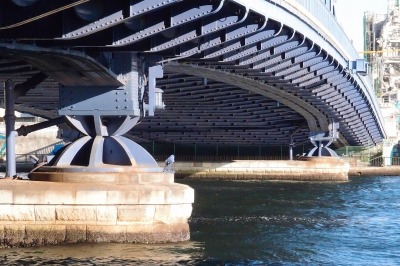 For Kiyosu Bridge, it is an image of wearing a shoe and riding a pier, so this part may be an Achilles tendon or ankle in humans.
For Kiyosu Bridge, it is an image of wearing a shoe and riding a pier, so this part may be an Achilles tendon or ankle in humans.
Then, in the style of a woman Kiyosubashi, would it be like a "small woman's ankle"? I was strangely convinced (a little rude Kana?) 。
Kiyosu Bridge is a suspension bridge, but it is a rare suspension bridge when examined in various ways, and is a type called "autonomous suspension bridge".
The ordinary suspension bridge is a type called "other formula suspension bridge", and at both ends of the bridge there is a weight (Anka Reiji) for pulling the cable.
(The photo below shows the Rainbow Bridge of another set suspension bridge, with a huge white lump as Anka Reiji.)
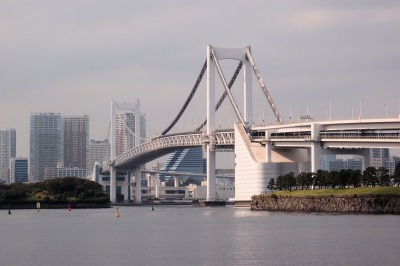
However, a "self-built suspension bridge" like Kiyosu Bridge is a type that connects wires to both ends of the bridge girder. Since there is no weight at both ends of the bridge, it seems to have a refreshing look as a result (incidentally, Kiyosu Bridge is not a wire but a steel chain, which seems to be rare).
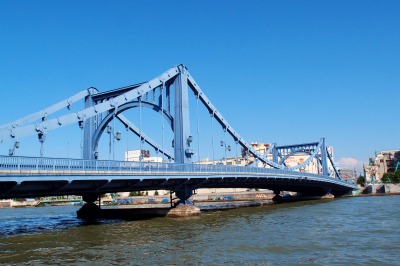
Also, I had the image of a suspension bridge with a sturdy thick pillar piercing the ground, but in the case of a "self-built suspension bridge", it seems to be related to the shape of a shoe. And my view of the pillars of Kiyosu Bridge was incorrect.
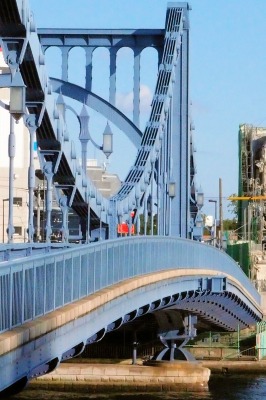 I felt that this way of making a bridge called "self-built suspension bridge" is creating the "female charm" of Kiyosu Bridge.
I felt that this way of making a bridge called "self-built suspension bridge" is creating the "female charm" of Kiyosu Bridge.
I don't have enough study yet, but I'm glad I was able to know a lot after asking my uncle. Thank you very much.
By the way, there are various types of bridges in the Sumida River, which is also called the "bridge museum".
At the "Chuo-ku Marugoto Museum" on November 1st (Sun), you can get on the boat for free, but why not take a boat and compare various bridges?
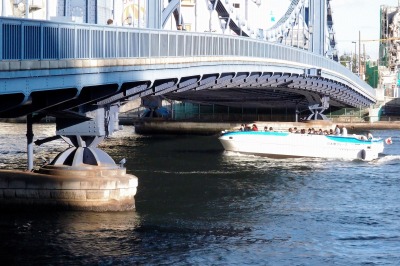
"Kiyosu Bridge" is sure to have a place where you can feel feminine compared to other bridges.
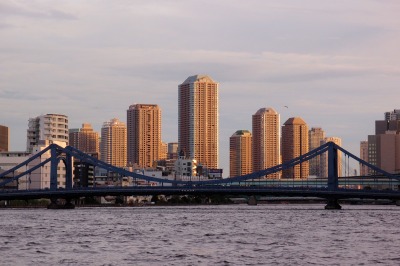 I hope you will find "female charm" by all means.
I hope you will find "female charm" by all means.
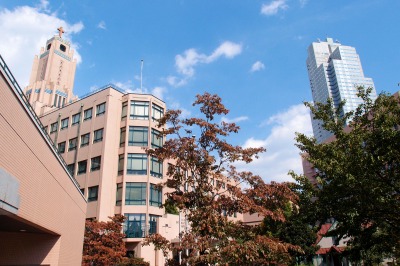
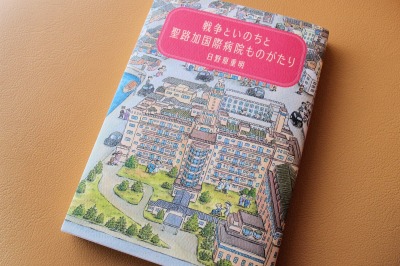
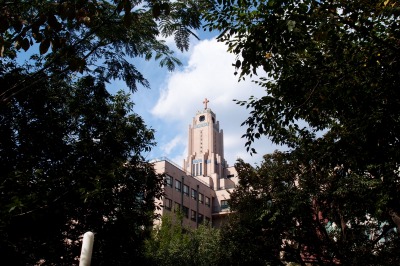
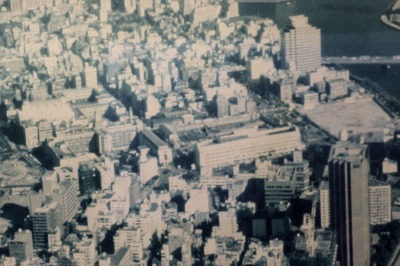
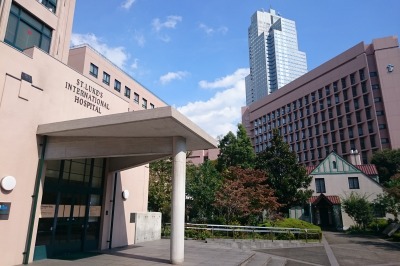
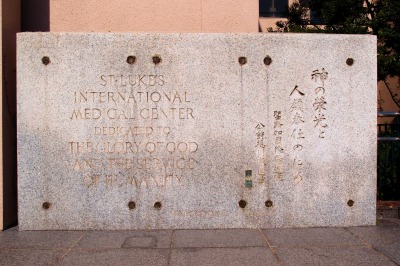 The old building was renovated in the 1990s, so this Sada foundation stone was originally in a different place. There are 12 traces of nail holes on this stone, which is traces of wartime. He was forced by the Ken soldiers to remove this stone, so it seems to be a scar when he was covered with thin granite as a response.
The old building was renovated in the 1990s, so this Sada foundation stone was originally in a different place. There are 12 traces of nail holes on this stone, which is traces of wartime. He was forced by the Ken soldiers to remove this stone, so it seems to be a scar when he was covered with thin granite as a response.